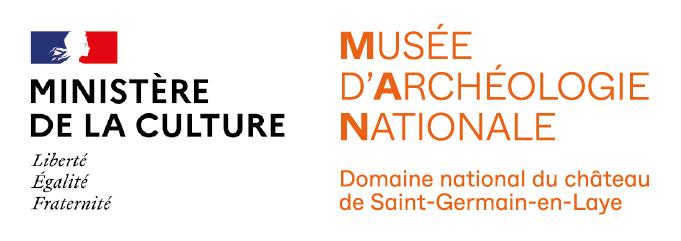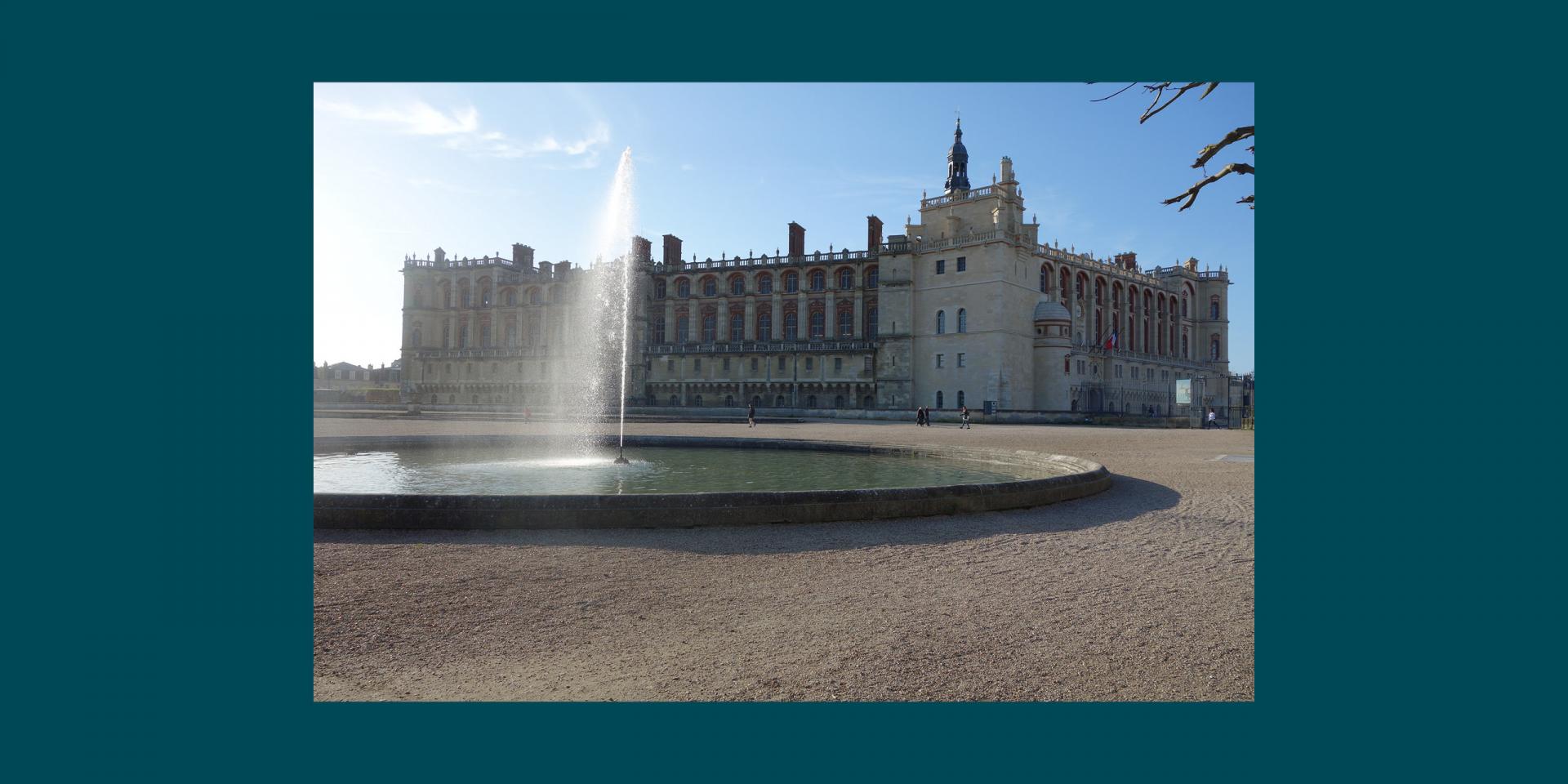The Château de Saint-Germain-en-Laye, a royal residence for several centuries and the birthplace of several sovereigns, was restored by Eugène Millet in 1862. Since then, on the initiative of Napoleon III, it has housed the Museum of National Antiquities, which became the Museum of National Archaeology in 2005.
Watch the film presenting the museum
A museum in a castle
A royal residence since Louis VI the Fat in the 12th century, Saint-Germain-en-Laye was both a place of pleasure and a place of power for the kings of France. Numerous royal edicts and treaties were signed in Saint-Germain-en-Laye, up to the 1919 treaty which officially ended the war with Austria.
Three sovereigns were born in Saint-Germain-en-Laye: Henri II, Charles IX and Louis XIV, but also Marguerite de Valois, better known as Queen Margot. Saint Louis, born in Poissy, had the castle enlarged and entrusted Hugues de Chelles with the task of building the Gothic chapel between 1234 and 1238. François I built a Renaissance palace on the foundations of Charles V's old castle. Henry II and Henry IV built a second building, called the Château-Neuf, between the Château-Vieux and the Seine.
The Sun King was born in Saint-Germain in 1638 and spent most of the first years of his personal reign there from 1666 onwards, before moving to Versailles in 1682. He was responsible for the interior design of the five corner pavilions that had just been built by Mansart.
James II Stuart, King of England in exile, accompanied by his family and supporters, arrived in 1689 in a virtually empty and uninhabited castle, which he occupied until the middle of the 18th century, when it was converted into courtiers' flats in the form of lots.
However, in the 18th century, hunting continued: Louis XV and Louis XVI continued to come to the forest of Laye. They relied on the role of the Noailles, who were granted the office of captain and governor of the châteaux, gardens, parks and forests in 1717. Their hôtel de plaisance, which is notable for the quality of its architecture by Jules Hardouin-Mansart, with stables and services on the edge of the forest, became a hunting lodge for the sovereigns.
From the Revolution onwards, the castle's destiny became a military one, first as a temporary prison for suspects from 1793 to 1794, then as a veterans' garrison in 1798. Napoleon I established a cavalry school there, which was active from 1809 to 1814. A military penitentiary, designed for 537 detainees, was set up there under the July Monarchy, from 1836 to 1855. Cells, kitchens and refectories, bathrooms, visiting room, guardhouse, offices, infirmary, dungeons and a workshop in the ballroom were built. Some floors were cut in half in height, moral sentences were inscribed on the walls and the ditch walls were raised.
There is little evidence of the royal past of this monument, which is dilapidated and empty of any furnishings related to its original function, and whose exterior architecture is in a very poor state of repair at the time of Queen Victoria's state visit in 1855.
Napoleon III saved it, restored it and installed the Museum of Celtic and Gallo-Roman Antiquities there. The walls of the cells and the dungeons of the penitentiary were demolished and the cleaned rooms were transformed into exhibition rooms. Some architectural remains of the royal castle, which were not demolished, were preserved.
The damage suffered by the building in the first half of the 19th century, followed by its restoration and the installation of the museum, have obscured any vestige of a royal residence and made it more of a memory than a tangible reality.
The creation of the Museum of National Antiquities
On 1 April 1865, the first of eight meetings of the Commission for the organisation of the museum was held under the chairmanship of Count de Nieuwerkerke, Superintendent of Fine Arts (in a way our Minister of Culture). This Commission brought together great names in archaeology such as Alexandre Bertrand, Édouard Lartet, Félix de Saulcy and Jacques Boucher de Perthes. The final project was the work of Auguste Verchère de Reffye, Alexandre Bertrand and Claude Rossignol. The first director of the museum was Alexandre Bertrand. He adopted a chronological classification of objects, whereas until then the classification by subject had prevailed.
The museum's first regulations, in 1866, state that "the purpose of the Musée de Saint-Germain is to centralise all documents relating to the history of the races that occupied the territory of Gaul from the earliest times until the reign of Charlemagne; to classify these documents according to a methodical order; to make their study easy and accessible to the public; to publish them and to propagate their teaching".
The Museum of National Antiquities was therefore the first (and still is today, the only) museum devoted entirely to the archaeology of the national territory. This also distinguishes it from the archaeological departments of the Louvre, which were being developed at the same time.
The first seven rooms were inaugurated by the Emperor on May 12, 1867, in the pouring rain. This date had been chosen in connection with the Universal Exhibition. Forty-four rooms were opened to the public in 1907.
History of the museum and history of archaeology
The history of the Musée des Antiquités Nationales is inseparable from the development of French and European archaeology. Among the very first collections to be entered were those of Jacques Boucher de Perthes in the vicinity of Abbeville (Somme), which revealed, at the end of the 20th century, the existence of a prehistoric humanity that predated the Gauls by a long way.
The development of French prehistory was to undergo an extraordinary expansion thereafter, thanks to the work of Gabriel de Mortillet, inventor of the current prehistoric chronology, who brought in many reference archaeological series to the Museum. We also owe to Edouard Piette most of the Paleolithic art pieces kept in the Museum, in the layout that was intended at the beginning of the 20th century.
Gallic archaeology was literally born with the research of Félix de Saulcy, Alexandre Bertrand and Jacques-Gabriel Bulliot on the sites of the Gallic War, in particular at Alesia and Bibracte. Between the wars, it was Henri Hubert who designed a complete overhaul of the museum's collections, adding a complete comparative archaeology section, drawing in particular on discoveries from the Far East.
The great archaeologists of the 20th century contributed to the enrichment and study of the collections, in particular Abbé Breuil, Louis Capitan, Henri and Jacques de Morgan, Abbé Cochet, Joseph Déchelette, and many others.
The museum today
New collections continue to enter Saint-Germain. They come from current research carried out in France or abroad (such as the extraordinary series of objects from New Guinea, collected by Pierre Pétrequin) or from major salvage excavations, such as the exceptional furniture from the Gallic chariot tombs at Roissy airport discovered in 1995.
While donations are one of the ways in which the collections are enriched, the Museum also buys objects from specialised galleries, private individuals or at public sales. Thus, the museum recently made two exceptional acquisitions: a 4th century engraved glass cup representing the sacrifice of Isaac by Abraham and a Bronze Age gold treasure comprising 2 torques and 4 bracelets.
Watch the video on the history of the museum
The national domain
The National Estate of Saint-Germain-en-Laye offers 40 hectares of preserved spaces bordering a gigantic forest of 3500 hectares, 20 minutes from Paris.
Adjacent to the former royal forest, the national estate of Saint-Germain-en-Laye offers a journey through the history of gardens. Moreover, this exceptional heritage area is managed in an ecological manner.
The Domaine National is inseparable from the château, which has become the National Archaeology Museum, and is classified as a "remarkable garden". This popular walking area allows visitors to admire the French gardens designed by André Le Nôtre for Louis XIV or to stroll in the English garden created in the 19th century and home to several rare trees. The jewel in the crown is André Le Nôtre's Great Terrace, which offers a superb panorama of western Paris.
The park is classified as a historical monument since 1964.
The public is welcome all year round and the numerous events that take place there tend to make them aware of this heritage and natural legacy.

